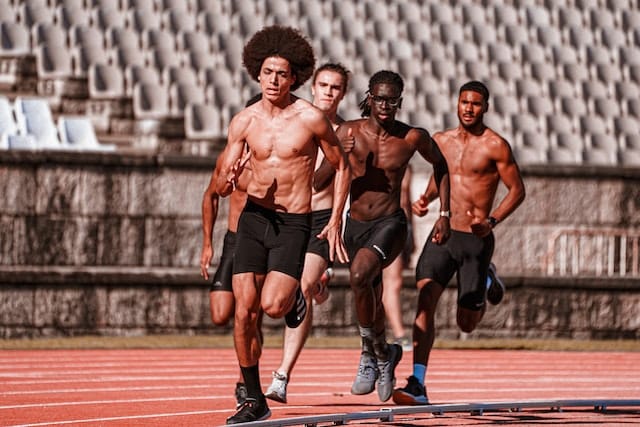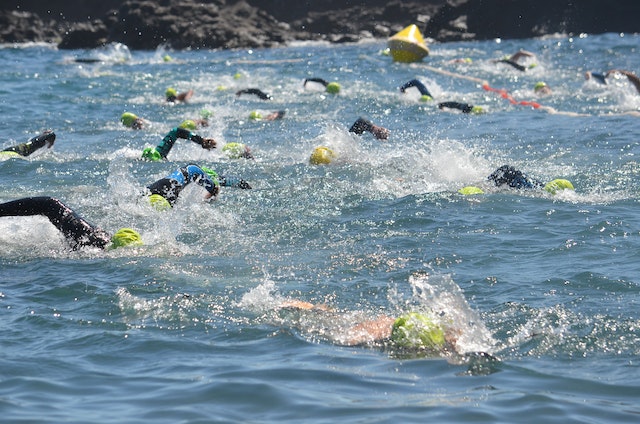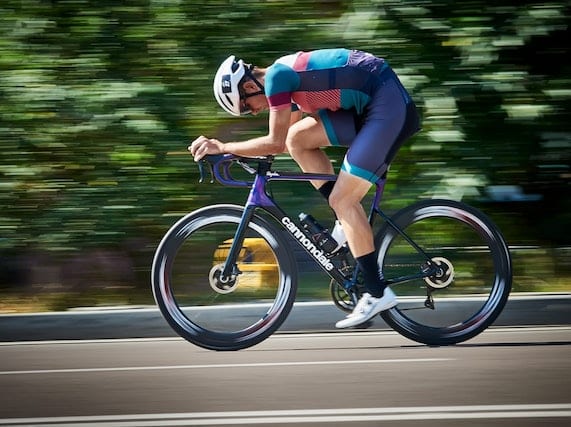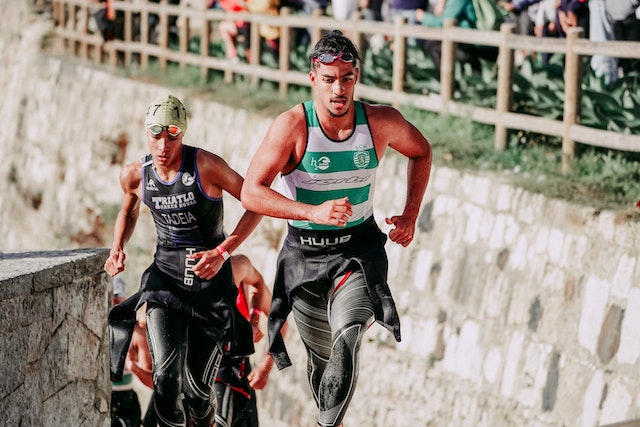
Triathlon training, a thorough training plan, endurance training – using all of the methods we can to go about ironman training
Clues in the name, you’ve got to be tough for Ironman. Thankfully, all you need to do to be tough is train. If you’re in the right mindset then this shouldn’t be too hard, in fact, training is the best thing about all of this – progression is key to human fulfilment.
So, I’m guessing that because you’re here, reading about ironman you’re ready to get to the next level in your fitness career.
Good news.
So am I.
That’s why I’m helping us both by running through some tips here today.
An ironman training plan may include bits from a triathlon training plan, ironman distance work, training time techniques, race day mentality… and more.
Either way, it’s going to be simple. It’s going to be easy to digest, and we’re going to give you the right tools to become an ironman yourself.
Let’s do it.




The run-down
An Ironman competition is an event you can find all over the world. From the iconic Ironman world championship race to smaller ironman events, chances are if you’re a runner, you’ll have heard of it.
The event details are as follows –
- 2.4 mile swim
- 1112 mile bike
- 26.2 miles
- with a total 140.6 miles
But you can also get half-ironman athletes competing in half-distance races (the swimming, biking and running distances are halved).
How to train
Time:
Leaving enough time to enact proper training volume is important. An ironman race should take a lot of practice (otherwise, the name would hardly be justified), and so you should leave plenty of time for your training plans.
Most recommend starting as soon as you sign up. Considering this is a year, this should give you plenty of time to utilise different techniques for your training plan.
Consistency:
No matter how hard you want to avoid training, maybe it’s a rainy day, or you didn’t get quite enough sleep, you should be consistent.
An Olympic distance triathlon trainer knows exactly what they need to do in order to reach their targets – repeat what’s needed.
A training schedule is almost pointless if it isn’t backed up in practice, so don’t waste your time making a training program if you aren’t going to stick to it, let alone signing up in the first place.
Gear:
You’ll most likely need the following, as well as needing them to train with, so get used to them far before the actual event day.
- Swim cap
- Trisuit/shorts
- Bike
- Goggles
- Helmet
- Shoes
- Race belt
- Anti-chafe cream
- Bottle
- Safety gear
Conclusion
No matter the direction, no matter your weaknesses, you’ll need to improve your game in the areas needed for you. For a half-ironman, (if it’s your first) or a full-distance race, be sure to take note of what areas are letting you down now, so you have plenty of time to improve them.
Other than that, get training and stay inspired.
Your goals are drawing closer and closer with each day that passes.
FAQs
Should all training be structured training?
You’ll benefit more greatly from structured training.